Fritz Lang’s Scarlet Street, released in 1945, is a masterclass in film noir, weaving a dark tale of obsession and deception in the gritty backdrop of New York City. Starring Edward G. Robinson, Joan Bennett, and Dan Duryea, the movie presents a complex web of characters caught in a destructive triangle. Beyond its compelling narrative, Scarlet Street 1945 also offers a fascinating glimpse into the beauty and fragrance trends of the era, which I’ll explore in detail.

Scarlet Street 1945 movie poster featuring Edward G. Robinson, Joan Bennett, and Dan Duryea, highlighting the film noir genre.
The film immediately establishes its noir atmosphere with its opening scene. A rain-slicked Greenwich Village street, shadowed by elevated train tracks, evokes the stark realism and urban alienation characteristic of the genre. This visual echoes the art of Edward Hopper and Reginald Marsh, but with a distinctly darker, more sinister edge. Through the eyes of the protagonist, the unassuming bank clerk Christopher Cross (Robinson), we witness a violent altercation: a man striking a woman, throwing her to the ground, and kicking her.
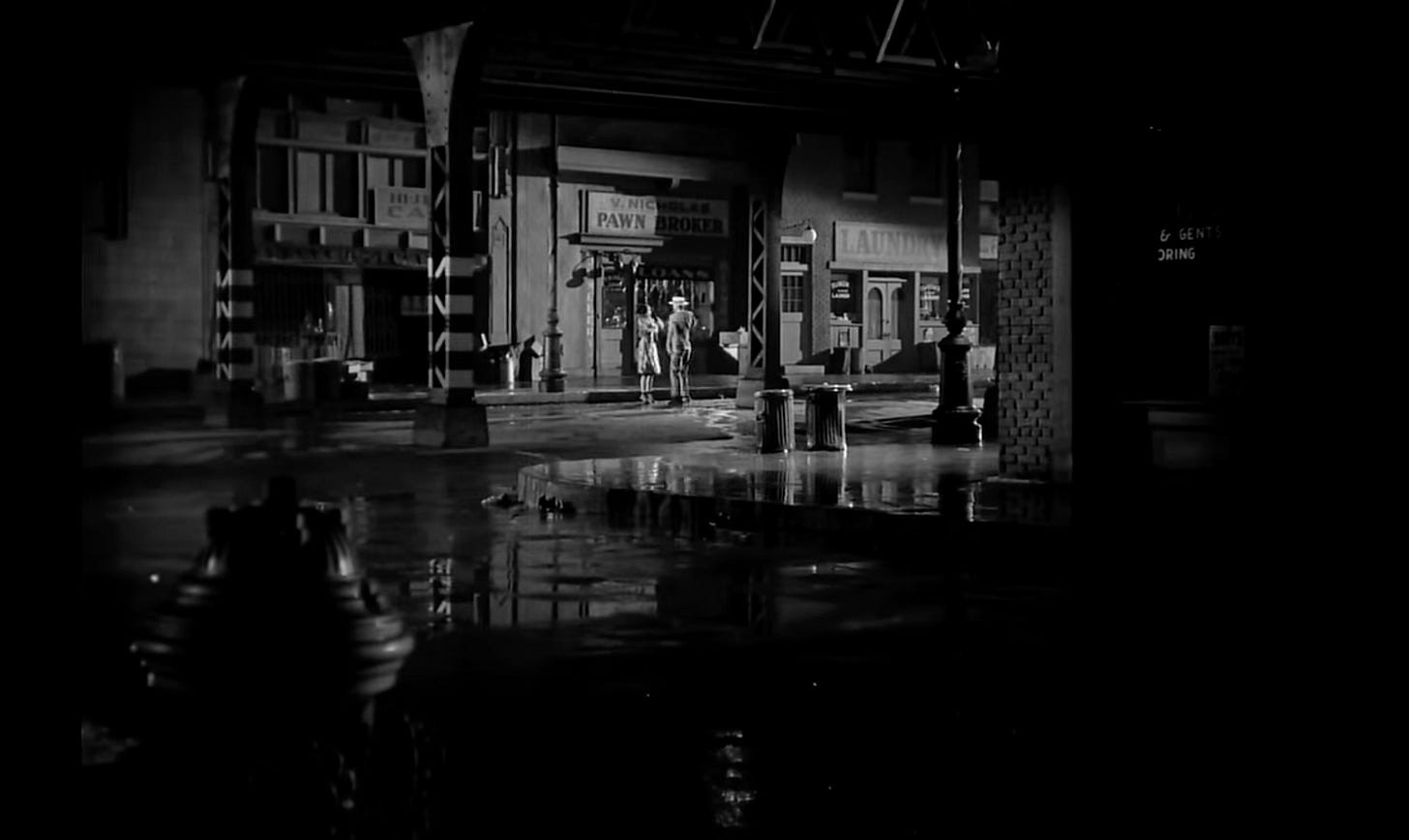
Opening scene of Scarlet Street 1945, showcasing a rainy Greenwich Village street under elevated train tracks, embodying film noir aesthetics.
The victim is Katherine “Kitty” March (Bennett), and her assailant is her manipulative boyfriend, Johnny (Duryea). The film subtly hints at Kitty’s possible work as a sex worker and Johnny’s role as her pimp, a suggestion made cautiously due to the strict decency codes prevalent in 1940s cinema.
Approximately twenty minutes into Scarlet Street, we are introduced to Kitty in her apartment, shared with her roommate Millie (Margaret Lindsay). Millie, a catalogue model, expresses concern about Kitty’s destructive relationship and lack of ambition.
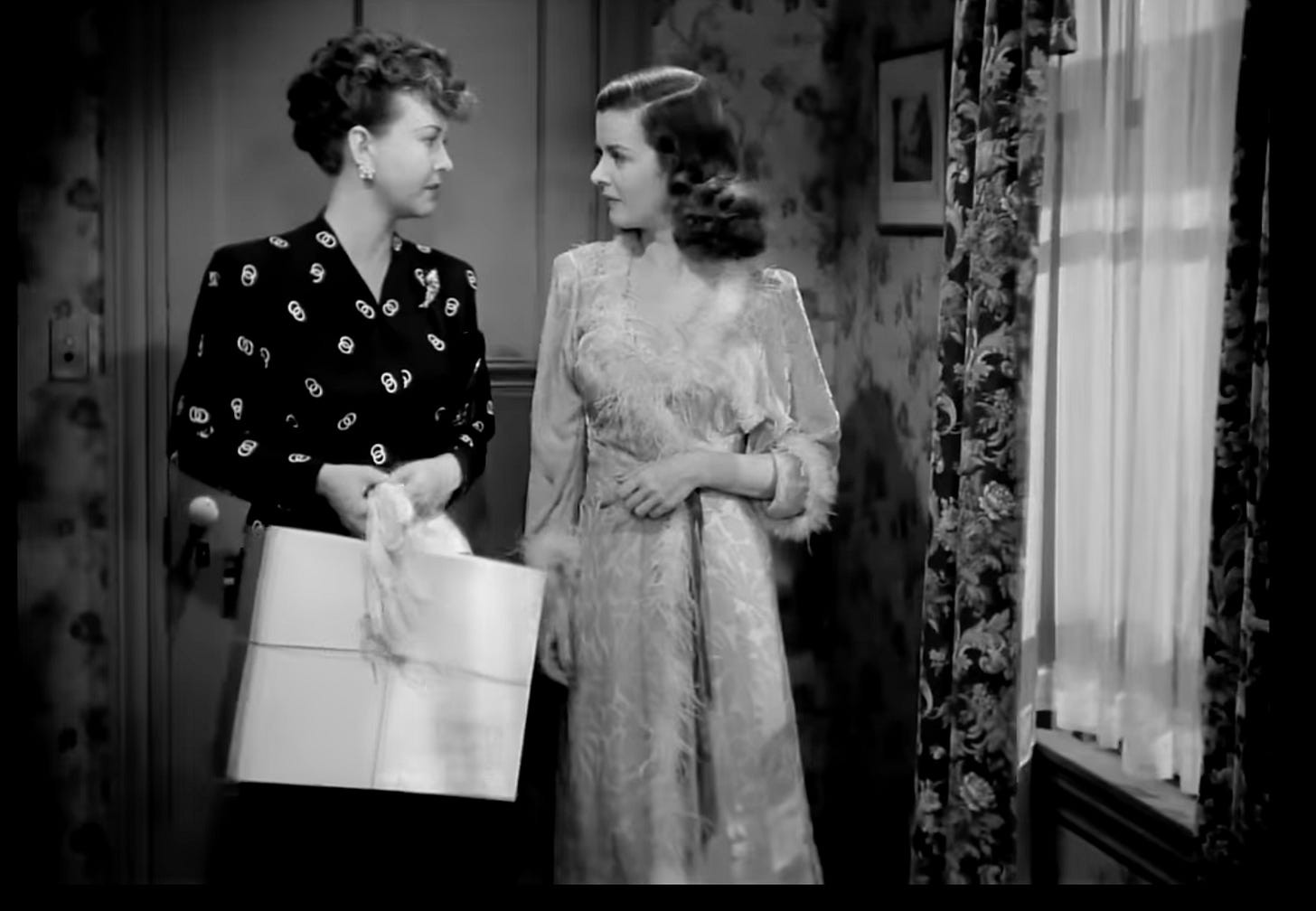
Kitty and her roommate Millie in a scene from Scarlet Street (1945), highlighting the contrast in their lifestyles and attitudes.
Their dialogue is sharp and revealing, highlighting Kitty’s infatuation with Johnny despite his abusive behavior, and Millie’s pragmatic and worried perspective.
Millie: “Honey, what’s happened to you?”
Kitty: “Don’t you wish it could happen to you?! I’m in love, crazy in love!”
Millie: “With a man who pushes you around the way I wouldn’t push a cat around.”
Kitty: “You leave Johnny out of this!”
Millie: “With your looks and figure you could get any man you want.”
Kitty: “Sure, but there’s only one I want.”
Millie: “Yeah, and he’s making a tramp out of you.”
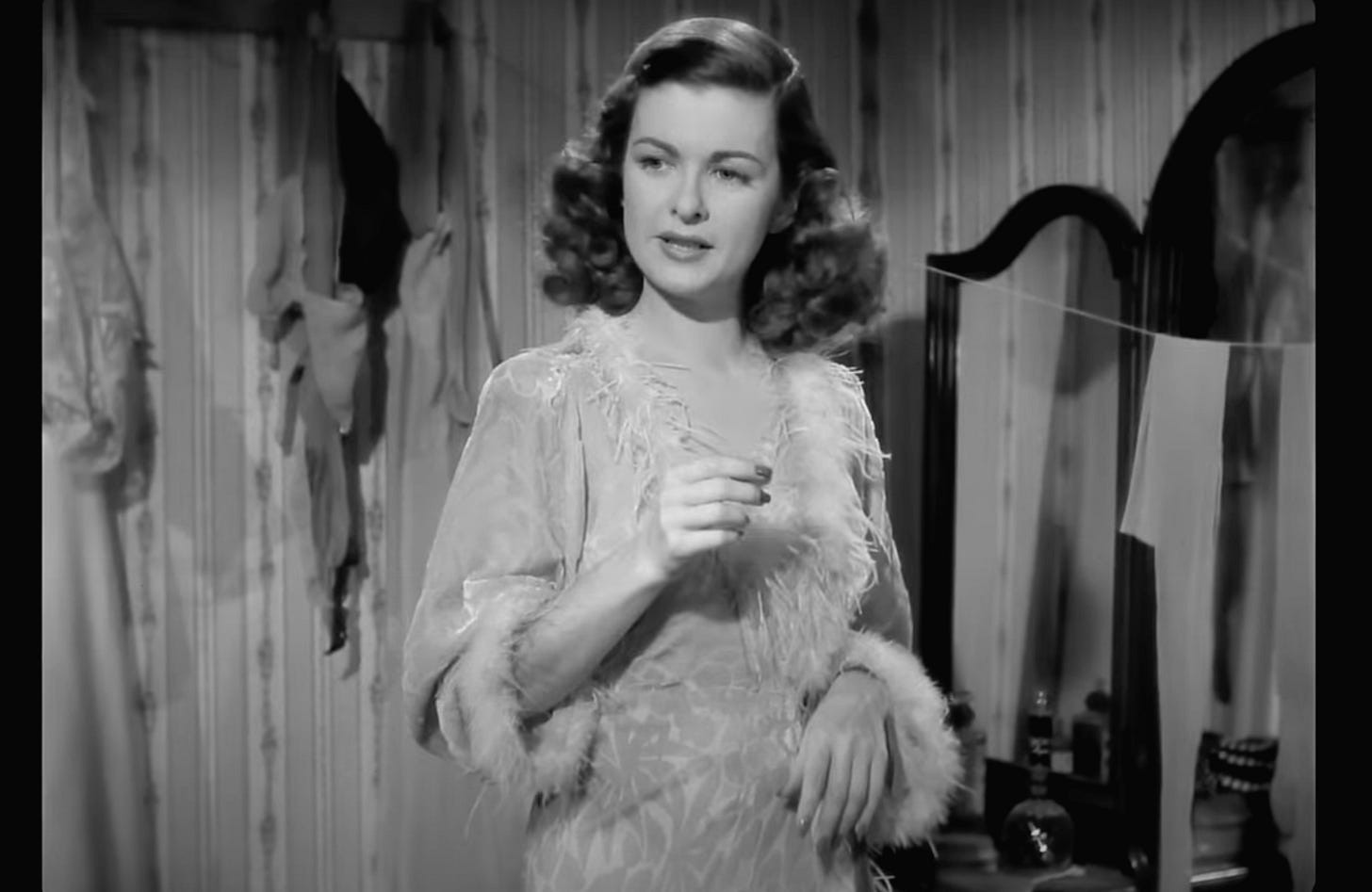
Joan Bennett as Kitty in Scarlet Street (1945), applying Lucien Lelong Opening Night Cologne, showcasing 1940s beauty rituals.
Kitty: “You wouldn’t know love if it hit you in the face!”
Millie: “If that’s where it hits you, you ought to know!”
During this exchange, Kitty moves to her dresser and applies perfume. On closer inspection, a distinctive round hobnail bottle with a tall neck and dark label is visible: Lucien Lelong Opening Night Cologne.
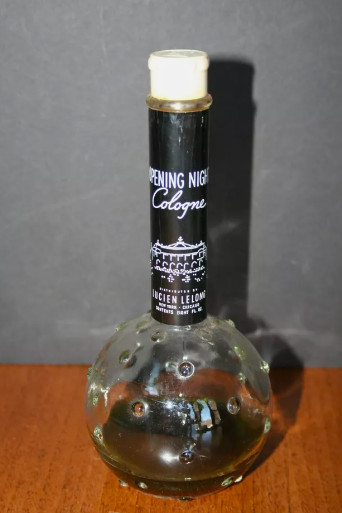
Close-up of Lucien Lelong Opening Night Cologne bottle from Scarlet Street (1945), highlighting the iconic design and 1940s fragrance culture.
Lucien Lelong fragrances, particularly in cologne concentrations, were accessible and popular in the mid-1940s. They offered a touch of Parisian couture glamour to a broader audience, even if a Lelong haute couture gown remained out of reach for most. The Opening Night label itself features a sketch of the Palais Garnier, the Paris Opera House, further enhancing its sophisticated appeal.
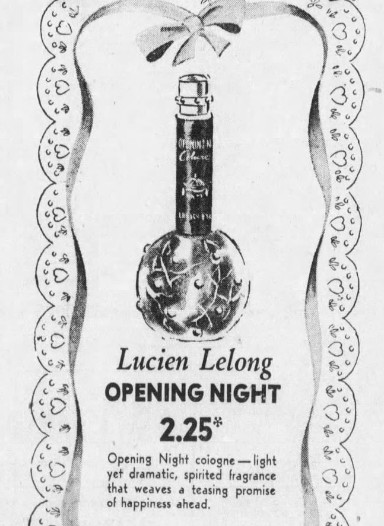
Vintage advertisement for Lucien Lelong Opening Night fragrance from 1944, reflecting the marketing strategies and glamour associated with perfumes in the 1940s.
Advertisements for Opening Night often promised to make the wearer feel like “the star of the performance” or “the star at [her] own beautiful premiere.” This marketing perfectly aligns with Kitty’s personality. She exudes main-character energy and craves glamour with minimal effort. Her aspirations to be an actress likely center on the allure of opening night stardom, rather than the hard work of auditions and rehearsals.
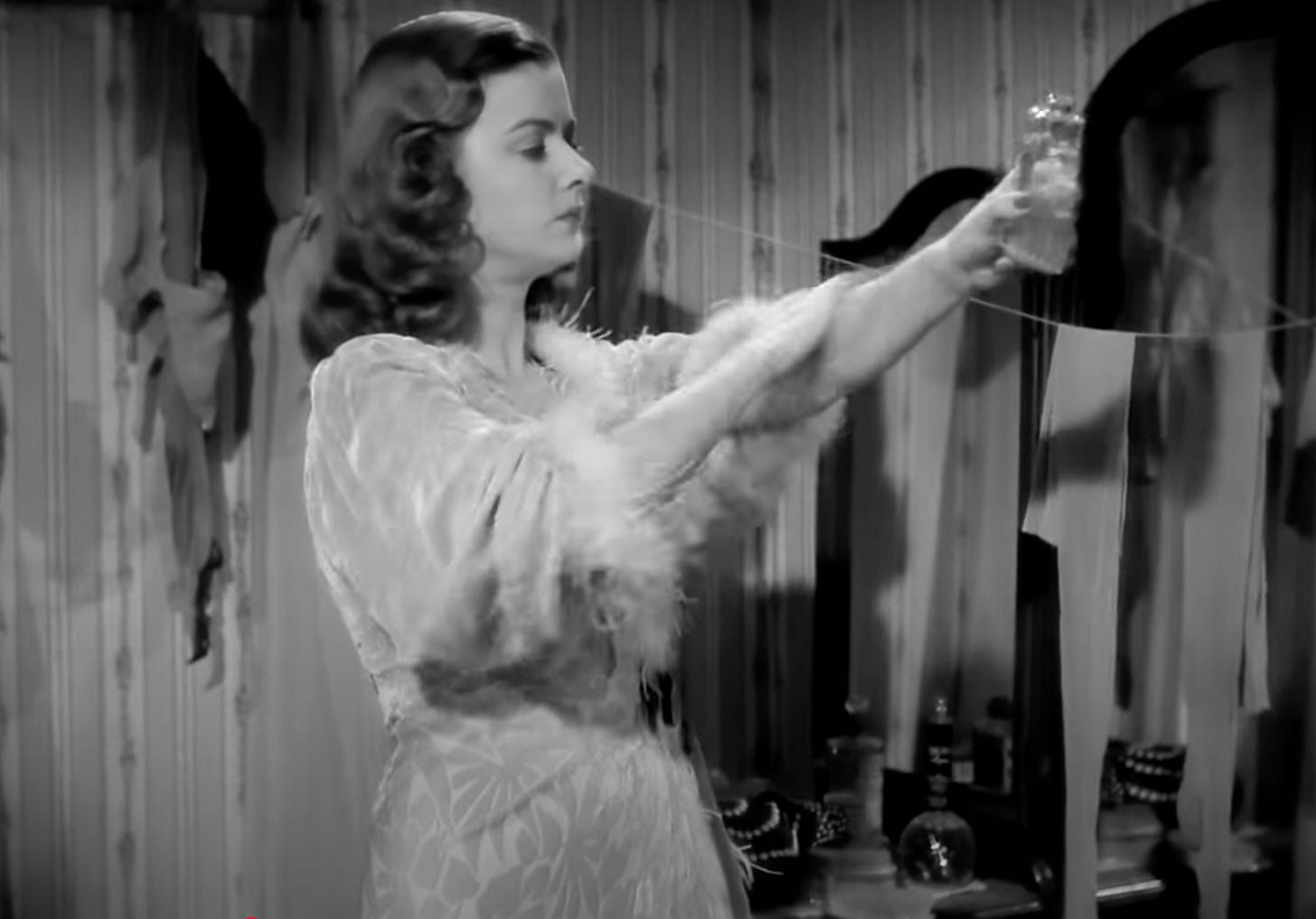
Kitty in Scarlet Street (1945) applying a skyscraper-shaped perfume, demonstrating 1940s beauty routines and product design trends.
Kitty, dressed in a marabou-trimmed dressing gown and chewing gum, then grabs another perfume bottle and liberally applies it to her arms, seemingly tuning out Millie’s scolding. This second bottle is shaped like a skyscraper, a very fashionable design during the Art Deco era and into the 1940s. While its exact brand is difficult to determine from the film, it strongly resembles bottles used by several fragrance companies during that period.

Example of a skyscraper-shaped perfume bottle, similar to the one seen in Scarlet Street 1945, representing Art Deco influence on 1940s perfume packaging.
These skyscraper bottle designs were a reflection of Art Deco’s lasting influence on commercial goods, inspired by the rapidly growing skylines of American cities. One such example is “Parfum Modernistic” by Lander, a jasmine fragrance housed in a similar bottle, showcasing the trend.
Kitty’s backstory remains somewhat vague in Scarlet Street, but it’s implied she came to New York seeking the glamorous life depicted in movies and magazines – dreaming of penthouse apartments and seeing her name in lights. By the time the film unfolds, however, reality has set in, and those dreams appear increasingly distant.
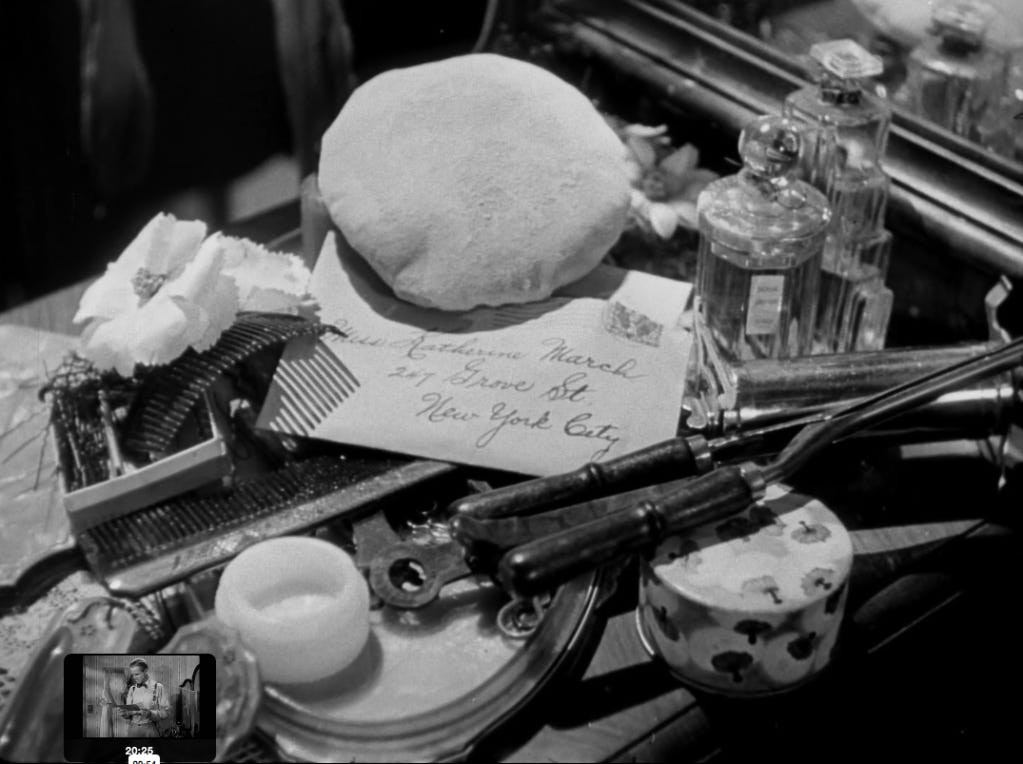
Kitty’s dresser in Scarlet Street 1945, displaying various beauty accessories, including Coty Air-Spun Face Powder and other unidentified items, offering a glimpse into 1940s vanities.
In a later scene, Kitty’s dresser reveals more about her beauty habits: hair ornaments, bobby pins, a comb, a curling iron, empty skincare jars, and another unidentified large splash perfume bottle. Notably, a canister of Coty Air-Spun Face Powder, recognizable by its classic yellow-and-white powder-puff print, is also visible.
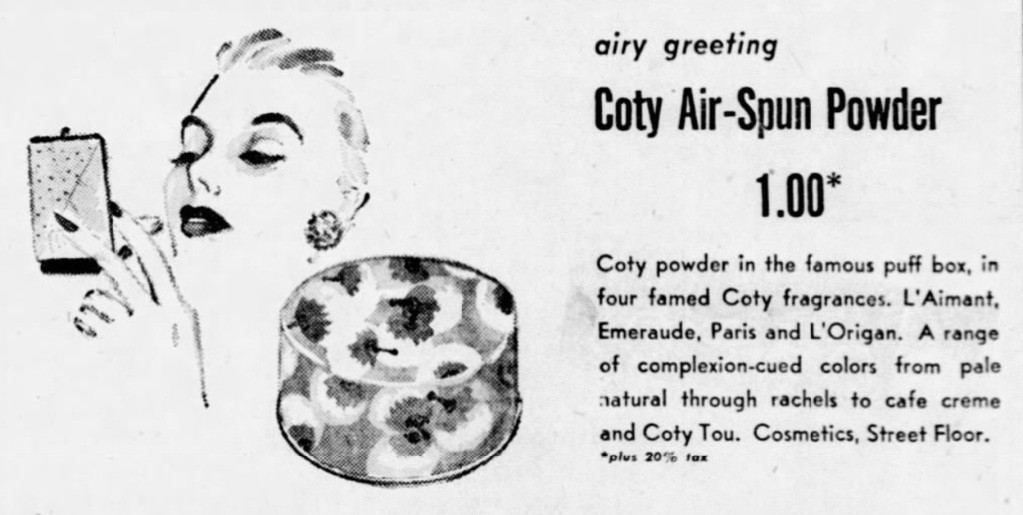
Coty Air-Spun Face Powder canister in Scarlet Street (1945), a popular 1940s beauty product, illustrating everyday makeup routines of the era.
A 1945 Coty advertisement reveals that Air-Spun powder was available in various shades and scented with Coty’s signature fragrances. Imagine the luxury of scented facial powder, available at drugstores! While scented body powders were common, scented face powder speaks to a different level of everyday indulgence in the 1940s beauty regime.
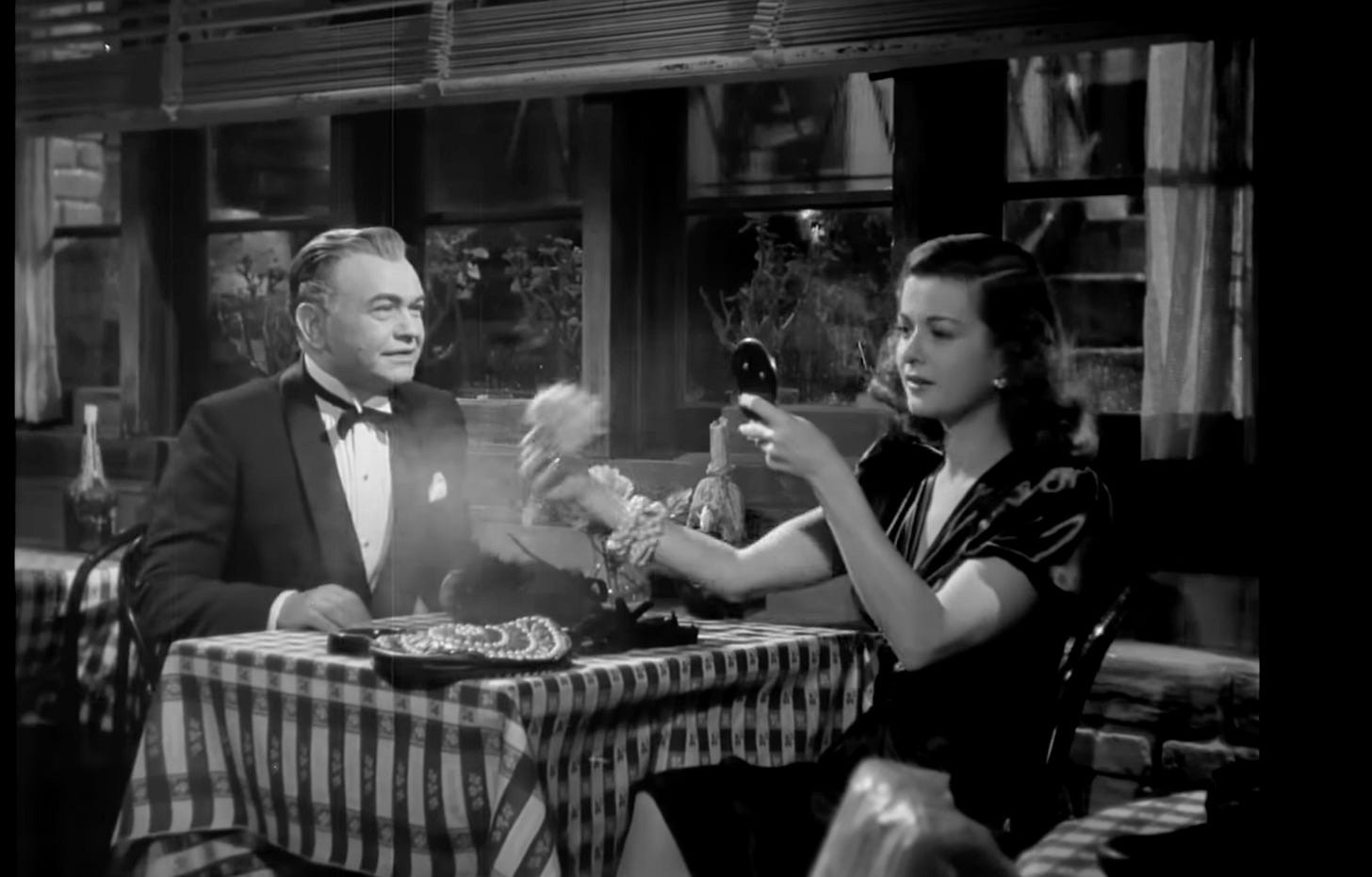
Kitty applying face powder from a compact in Scarlet Street 1945, showing a typical makeup touch-up scene and the use of compact powder in the 1940s.
Kitty also carries a compact of loose face powder in her purse, possibly Air-Spun decanted from her larger canister, for touch-ups on the go. This detail underscores the importance of maintaining a polished appearance, even in challenging circumstances.
Kitty: “Why are looking at me? Is my face dirty?”
Christopher: “No, it’s beautiful.”
Kitty: “I’ll bet it is! Gee, I’m a sight.”
Scarlet Street 1945 is a compelling film noir classic, albeit not a lighthearted one. Its meticulous attention to detail, including the beauty and fragrance items featured, provides a rich and authentic glimpse into the 1940s. If you are interested in film noir or vintage beauty, Scarlet Street is definitely worth watching and easily accessible online.
